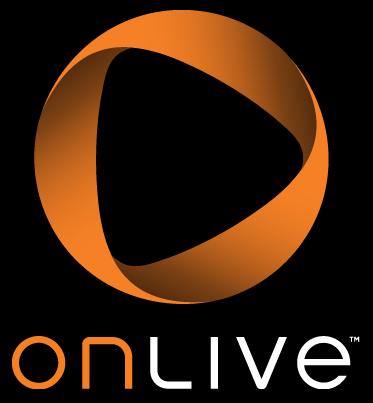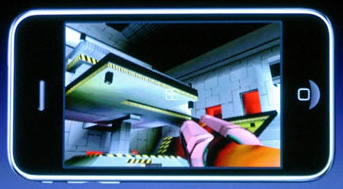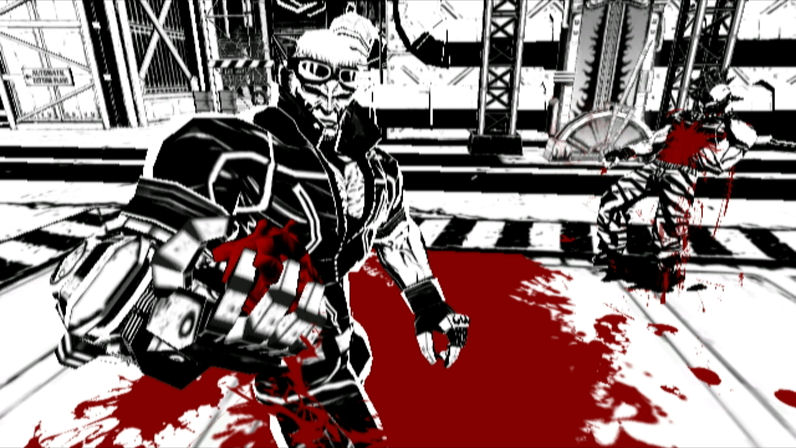 The folks at Good Old Games, or GOG as they like to be called, sent me a beaming press blast today about how they’ve brought megapublisher Ubisoft on board. The Web site’s stock in trade is old video games for download — Duke Nukem, Freespace, MDK, etc. — so now they’ll be getting titles like Beyond Good and Evil and Prince of Persia: The Sands of Time.
The folks at Good Old Games, or GOG as they like to be called, sent me a beaming press blast today about how they’ve brought megapublisher Ubisoft on board. The Web site’s stock in trade is old video games for download — Duke Nukem, Freespace, MDK, etc. — so now they’ll be getting titles like Beyond Good and Evil and Prince of Persia: The Sands of Time.
But here’s the hook: GOG’s offerings don’t include any Digital Rights Management, so players are free to install as many copies as they want, wherever they want.
Ubisoft has stumbled with DRM in the past. Last summer, legally downloaded copies of Rainbow Six Vegas 2 for the PC wouldn’t work because they lacked an authentication disc (duh), and the company resorted to an illegal crack from a warez group to fix it (d’oh). A few months prior, DRM rendered Assassin’s Creed unplayable for some rightful owners as it unsuccessfully tried to authenticate over the Internet.
So when Prince of Persia was released for the PC in December, Ubisoft threw its hands in the air and abandoned DRM for the game. Ars Technica suspected that this was just a way for the company to build evidence of how much money they lose without copy protection.
I don’t know whether that’s true, or whether the results from Prince of Persia had any bearing on the deal with GOG, but it’d be great to find out. Unfortunately, the handful of questions I sent Ubisoft’s way have so far gone unanswered.
In any case, I’m not keeping my hopes up for a drastic change in Ubisoft’s philosophy, but I’ll post an update if I hear differently. I suspect the company is willing to play by GOG’s rules in order to get the content out there. The site launched a public beta in September, and its as good a source of revenue for dated PC titles as Ubisoft is going to get. Besides, if there was any danger of widespread piracy for those old titles, it reared its head a long time ago.

 Funny thing about the Internet age: When a video game company announces a significant improvement in its console, there needn’t be any countdown to implementation.
Funny thing about the Internet age: When a video game company announces a significant improvement in its console, there needn’t be any countdown to implementation. There’s a sweet, sweet buzz in the air this week with the unveiling of OnLive, a start-up computer game service that’s inspiring eerie prophecies on the demise of the console and the subsequent rebirth of PC gaming.
There’s a sweet, sweet buzz in the air this week with the unveiling of OnLive, a start-up computer game service that’s inspiring eerie prophecies on the demise of the console and the subsequent rebirth of PC gaming.
 Oh, Peter Dille. The Sony Senior VP of Marketing has a great acid tongue (he recently said game publishers want to “
Oh, Peter Dille. The Sony Senior VP of Marketing has a great acid tongue (he recently said game publishers want to “ Namco is dipping its toes into Facebook gaming with two classic titles,
Namco is dipping its toes into Facebook gaming with two classic titles,  The story, linked in Harry’s
The story, linked in Harry’s  For over two years, the Wii was regarded as a family system, and in many ways, it still is, with Wii Sports, Wii Fit and Mario Kart commanding most of the revolutionary console’s popularity. But a sudden turn of events hint of changes on the horizon.
For over two years, the Wii was regarded as a family system, and in many ways, it still is, with Wii Sports, Wii Fit and Mario Kart commanding most of the revolutionary console’s popularity. But a sudden turn of events hint of changes on the horizon. We’re hours away from the midnight launch of Capcom’s latest blockbuster, Resident Evil 5, and there’s
We’re hours away from the midnight launch of Capcom’s latest blockbuster, Resident Evil 5, and there’s  There’s a lot of bile flying around over a British government ad campaign that takes a hearty crack at video games.
There’s a lot of bile flying around over a British government ad campaign that takes a hearty crack at video games.